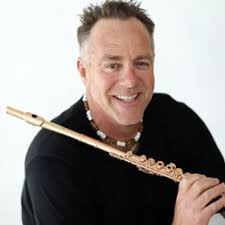Dance Rhythms and Flat Tires at the Symphony
The San Diego Symphony demonstrated its continuing progress towards world class status through its alluring program on Friday night. Entitled “Dance Rhythms,” the evening consisted of 20th Century masterpieces by Argentinian Alberto Ginastera (1916-1983), Spaniard Manuel de Falla (1876-1947) and contemporary Mexican composer Gabriela Ortiz (1964 -). We witnessed moments of unmitigated and exquisite beauty at the hands of guest conductor Carlos Miguel Prieto, as well as one huge musical flat tire.
Prieto opened the program with Ginastera’s “Four Dances” from Estancia, Op.8a, executing its delicious orchestration with crisp, precise rhythms. Maestro Prieto’s decision to conduct these pieces from memory, was a testament to his familiarity with this popular work, and his handling of the jagged rhythms and subtle orchestration was impressive. I do not remember hearing such a vibrant performance of these dances as last night’s.The “flat tire” of the evening came with the second piece of the program, “Concierto Voltaje” for timpani and orchestra by Gabriela Ortiz. The challenge confronting a composer choosing to write for timpani, is the utter mono-tonality of the instrument. The turgid demonstration of soloist Gabriela Jiménez left me fighting to keep my eyes open, as I listened to what seemed like a musical version of someone mumbling with a mouth full of rocks. Personally, I would just as soon listen to a Concerto for Dentist’s Drill, Patient and Orchestra. The piece was utterly without charm, discernible form, melodic interest or arresting timbral properties and the overwrought, stentorian performance of Señora Jiménez failed to convince me of any profound musicality. Physical gestures displayed a randomness and appeared strangely calculated as artificial performance features.
The piece’s failure was exasperated by the most pretentious set of program notes that I have seen in many years. The notes were credited to the composer, who, for some reason, deemed it necessary to both quote herself and speak in the third person, utilizing arcane musical references that amounted to nonsense when they were analyzed. This was clearly an example of Frank Zappa’s observation that “talking about music is like dancing about architecture.” What a waste of time, so naturally, the audience was gifted with a totally inappropriate and extended encore. These are the kinds of works and performances that give “new music” a bad reputation.
To close the program, we were treated to a remarkable performance of the complete ballet music from “El Sombrero de Tres Picos” (“The Three Cornered Hat”) by Manuel de Falla. Here again, Maestro Prieto’s exquisitely etched timbral sensibilities and rhythmically virile conducting created a riveting interpretation. This performance utilized the services of the gorgeous and opulent soprano of Mónica Ábrego. Her singing left me wishing to hear her in a larger role, since the soprano’s part was quite limited. Perhaps we will get the chance to witness her Carmen, especially in view of her sensuous presence in the de Falla.
Originally composed as a ballet for Sergei Diaghilev’s Ballets Russes in a collaboration with a veritable plethora of eternal stars such as Leonid Massine (choreographer and danseur), Tamara Karsavina (prima ballerina), Pablo Picasso (painter of the sets) and conductor Ernst Ansermet, the piece was destined for greatness. Fortunately for us, de Falla delivered on his part, leaving us with a masterful score unblemished by time (the piece premiered in 1919.) The orchestration sounded impressively fresh and was performed masterfully by the players of the Symphony.
Remarkable for its time, the piece was an early attempt to break down the “fourth wall” between the action on the stage and the audience. This particular attempt introduced a sung text which, for its time, was a rarity. Last night’s performance introduced a new text into the mix that although fascinating, without the words printed in the program was probably meaningless to most of the audience. The text chosen was an excerpt from Federico García Lorca’s “Ballad of the Moon.” Music lovers and fans of 20th Century music will be familiar with the poem through its setting by George Crumb in “Night of the Four Moons.” The cognitive dissonance of the poem’s appearance in the Suite was puzzling. It added nothing to the piece but was oh, so lovely to hear.
The review has been corrected to reflect helpful information provided by David Gregson to whom I offer my gratitude.

Yochanan Sebastian Winston, Ph.D. has performed throughout the United States, Europe and Latin America. His repertoire spans classical, jazz, klezmer, new age, contemporary, rock & roll and pop and is very active as a composer. Dr. Winston holds a Ph.D. from the UCSD, a Diplôme from the Conservatoire National de Region de Boulogne-Billancourt (France), and a Master’s and Bachelor’s of Music from the Manhattan School of Music in New York City.

![Carlos Miguel Prieto [photo (c) Benjamin Ealovega]](http://www.sandiegostory.com/wp-content/uploads/2015/11/Carlos-Miguel-Prieto2_Benjamin-Ealovega-200x300.jpg)
If I am not sadly mistaken, it was not the “ever-popular suite Suite from ‘El Sombrero de Tres Picos’ (‘The Three Cornered Hat’) by Manuel de Falla.” but a rare performance of the entire ballet — which I have never heard played live before.